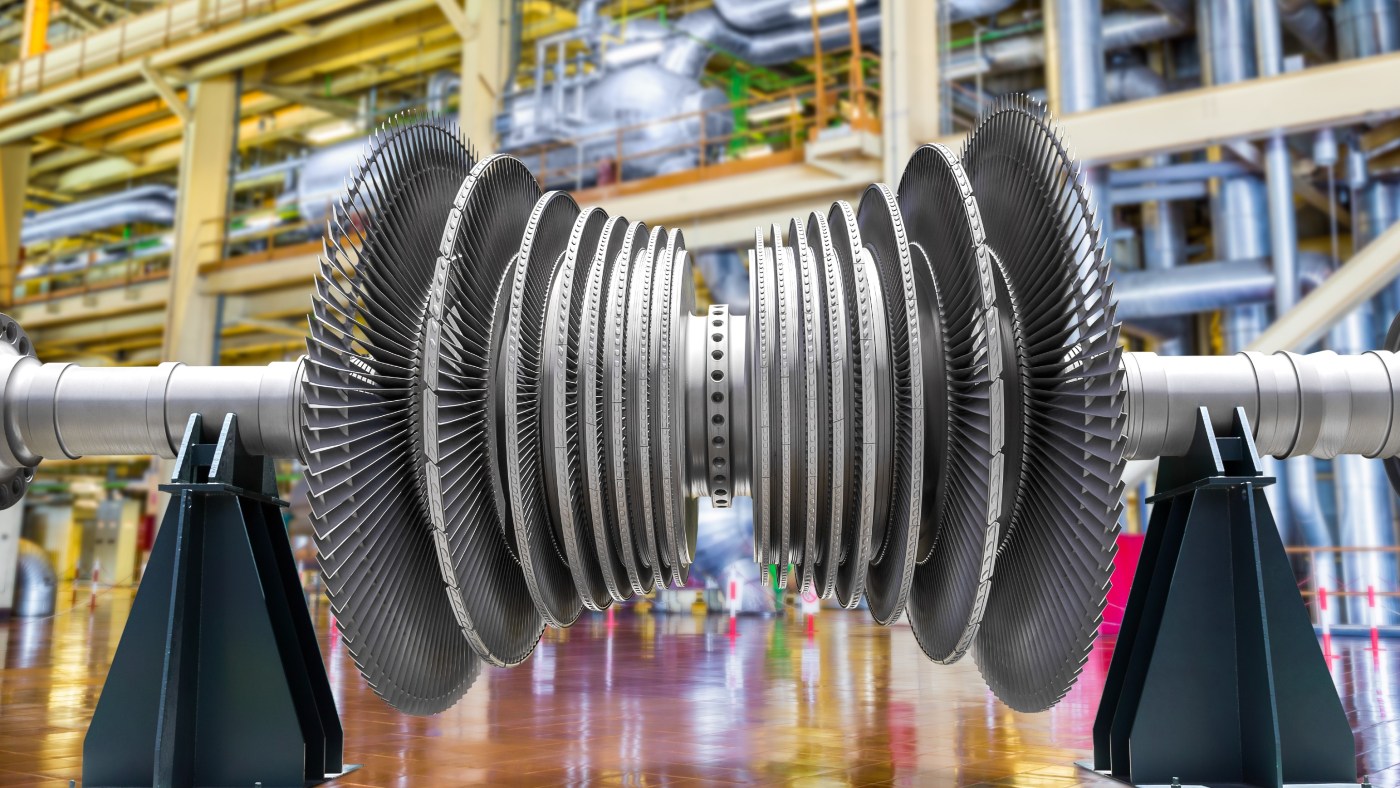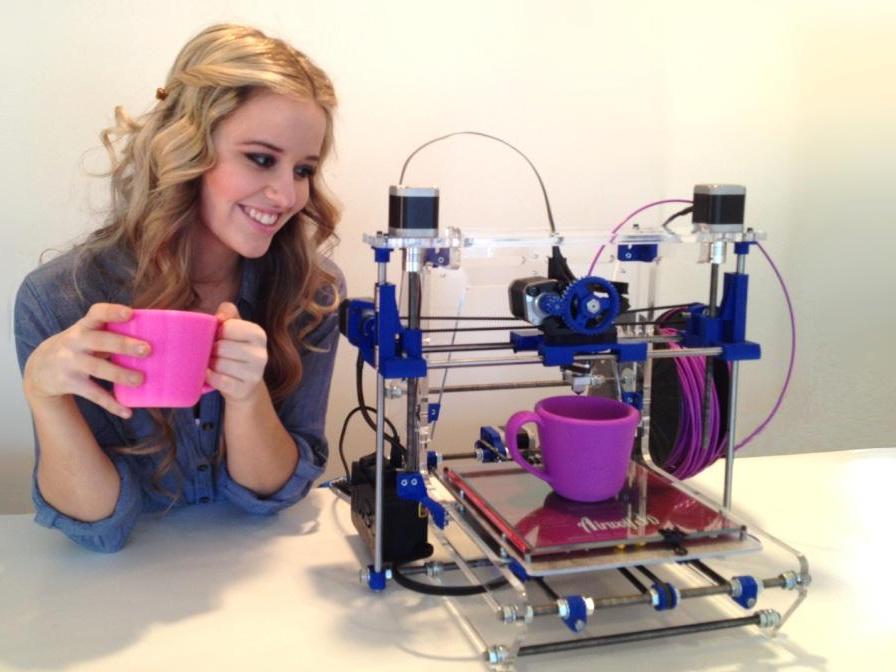
Posted on 06/19/2023 11:23:07 AM PDT by Red Badger

Share 3D-printed “superalloy” could make power plants more efficient...Credit: kinwun / Adobe Stock
Anew high-performance metal alloy, called a superalloy, could help boost the efficiency of the turbines used in power plants and the aerospace and automotive industries.
Created using a 3D printer, the superalloy is composed of a blend of six elements that altogether form a material that’s both lighter and stronger than the standard materials used in conventional turbine machinery. The strong superalloy could help industries cut both costs and carbon emissions — if the approach can be successfully scaled up.
The challenge: In the world of materials science, the search for new metal alloys has been heating up in recent years. For over a century, we’ve depended on relatively simple alloys like steel, composed of 98% iron, to form the backbone of our manufacturing and construction industries. But today’s challenges demand more: alloys that can withstand higher temperatures and remain strong under stress, yet still be lightweight.
Engineers have long tried to optimize the materials used in turbines — the spinning machinery in power plants that help convert mechanical energy into electricity. But even state-of-the-art materials, like nickel- and cobalt-based superalloys, tend to degrade and perform worse when exposed to extremely high temperatures.
That’s one reason why scientists have spent the past two decades experimenting with complex alloys, some consisting of up to six different metals. By tweaking the exact proportions of elements that make up a superalloy, scientists hope that new atomic-scale interactions will occur, leading to the discovery of beneficial properties. However, with an almost infinite combination of elements in different proportions, optimizing these alloys for specific applications presents a significant challenge.
The innovation: One promising approach is the use of 3D printing technology. This method allows researchers to control the relative proportions of different metals precisely. They achieve this by rapidly melting metals in a solid, powdered form using a powerful laser and then depositing them in thin layers.
A team of researchers led by Andrew Kustas at Sandia National Laboratories, Albuquerque, New Mexico, utilized this technique to develop a high-performing six-element superalloy. The alloy — made of 42% aluminum, 25% titanium, 13% niobium, 8% zirconium, 8% molybdenum, and 4% tantalum — is strong, lightweight, and incredibly heat resistant.
These characteristics are especially important for the turbines used in power plants, which account for approximately 73% of all electricity generation worldwide. After all, the higher the temperature of the gas driving the turbines, the faster they spin and the more efficient they become.
When heated to 800°C (1472°F) — a common temperature in power plant turbines — this superalloy remained stronger and more lightweight than many others designed for a similar purpose. This breakthrough suggests potential applications beyond power turbines, particularly in aerospace where materials need to be strong, lightweight, and resistant to extreme temperature variations.
The researchers also found that the performance of the superalloy correlated with predictions generated from a computer model that was designed to predict how particular combinations of elements would conduct thermal energy. Those predictions suggest that future computer models might be able to help predict which combinations of elements are likely to result in new and useful superalloys.
To bring the recently created superalloy into mainstream manufacturing, the team hopes to find a way to economically scale up their 3D printing process while ensuring that the finished products don’t contain micro-scale cracks, which may prove difficult to do on a larger scale. Surmounting these challenges could help make the machines that power our everyday lives both stronger, more efficient, and less damaging to the environment.
AVIATION PING!.............
Lighter.... yes, stronger? I got doubts about comparisons.
Aside from the possible turbine use, the materials could be used in IC Engine components, like pistons and combustion chambers or sleeves.
The engines could be run at a much higher temperature for even more fuel efficiency and less pollutants.....................
I’m thinking a 3d printed Ruger.
Aside from the possible turbine use, the materials could be used in IC Engine components, like pistons and combustion chambers or sleeves.
The engines could be run at a much higher temperature for even more fuel efficiency and less pollutants.....................
I think ive cut just about all of the common nickle alloys in aerospace parts mfg in 30+ years. HRSA’s...heat resistant super alloys are always a challenge to work with. Too bad that working with it doesnt pay the machinist any more $. Gotta admire the 3D printing tech these days.
Higher temps in ICE means higher NOx…that’s bad.
The idea that an alloy laid down in hundreds of micro-thin layers could be stronger than a one-piece forging is exceptionally hard to believe. You’d have hundreds of potential fault lines.
So does lightning and farming......
If the material has to be created in a 3D printer, then making the part at the same time is obvious. No machining required. The parts are fabricated as the material is created.
Sintered materials ( this is essentially a sintering process) can be very strong.
You could make all kinds of good stuff with that. I’m guessing it might be a tad expensive, though.

Superalloys aren’t new.
Wake me up when you can 3D print a cute girl like that.
Which would be more precise? That can also be a critical factor.

I absolutely agree, but it’s hard to believe stronger than a forging. It may be that blades of adequate strength and durability could be formed or part-formed this new way and *then* forged and could save on machining time. That’s IMO.
Disclaimer: Opinions posted on Free Republic are those of the individual posters and do not necessarily represent the opinion of Free Republic or its management. All materials posted herein are protected by copyright law and the exemption for fair use of copyrighted works.